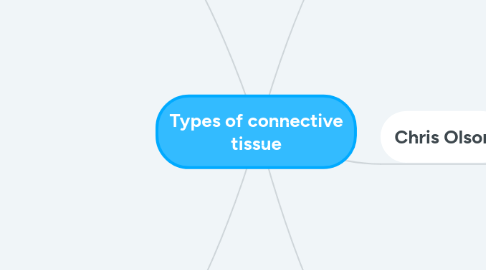
1. Muscle tissue
1.1. Skeletal
1.1.1. Movement of the body
1.1.2. Attached to bone or other connective tissue
1.2. Smooth
1.2.1. Regulates the size of organs, pushed fluid through tubes, controls amount of light that enters the eye, produces goosebumps
1.2.2. Hollow organs
1.3. Cardiac
1.3.1. Pumps blood
1.3.2. Heart
2. Nervous tissue
2.1. Neurons and glial cells
2.1.1. Transmit information in the form of action potentials, store information, integrate and evaluate data
2.1.2. Brain, spinal cord, ganglia
3. Connective tissue
3.1. Areolar
3.1.1. Loose packing, support, nourishment
3.1.2. Distributed through the body
3.2. Adipose
3.2.1. Packing material, insulator, energy storage, organ protection
3.2.2. Seubcutaneous areas
3.3. Dense regular elastic
3.3.1. Stretching and recoiling
3.3.2. Elastic ligaments between vertebrae
3.4. Dense regular collagenous
3.4.1. Withstand great pulling forces
3.4.2. Tendons and ligaments
3.5. Hyaline cartilage
3.5.1. Growth of long bones
3.5.2. Growing long bones, cartilage rings of respiratory system, costal cartilage, nasal cartilage,
3.6. Fibrocartilage
3.6.1. Withstand pressure
3.6.2. Intervertebral discs, pubic symphysis, articulations discs
3.7. Elastic cartilage
3.7.1. Provide flexibility
3.7.2. Ears, epiglottis
4. Epithelial tissue
4.1. Simple cuboidal
4.1.1. Secretion, absorption, movement of particles
4.1.2. Kidney tubules, glands, surface of ovaries
4.2. Pseudostratified columnar
4.2.1. Synthesize and severe mucus
4.2.2. Nasal cavity, pharynx, trachea
4.3. Stratified squamous
4.3.1. Protects against abrasion, infection
4.3.2. Outer layer of skin, mouth, throat
4.4. Transitional
4.4.1. Accommodates changes in fluid volume, protects effects of urine
4.4.2. Urinary bladder, ureters, superior urethra
4.5. Simple squamous
4.5.1. Diffusion, filtration, secretion, friction protection
4.5.2. Blood vessels, heart, lymphatic vessels
4.6. Simple columnar
4.6.1. Movement of particles
4.6.2. Glands and some ducts of lungs, uterus, stomach

